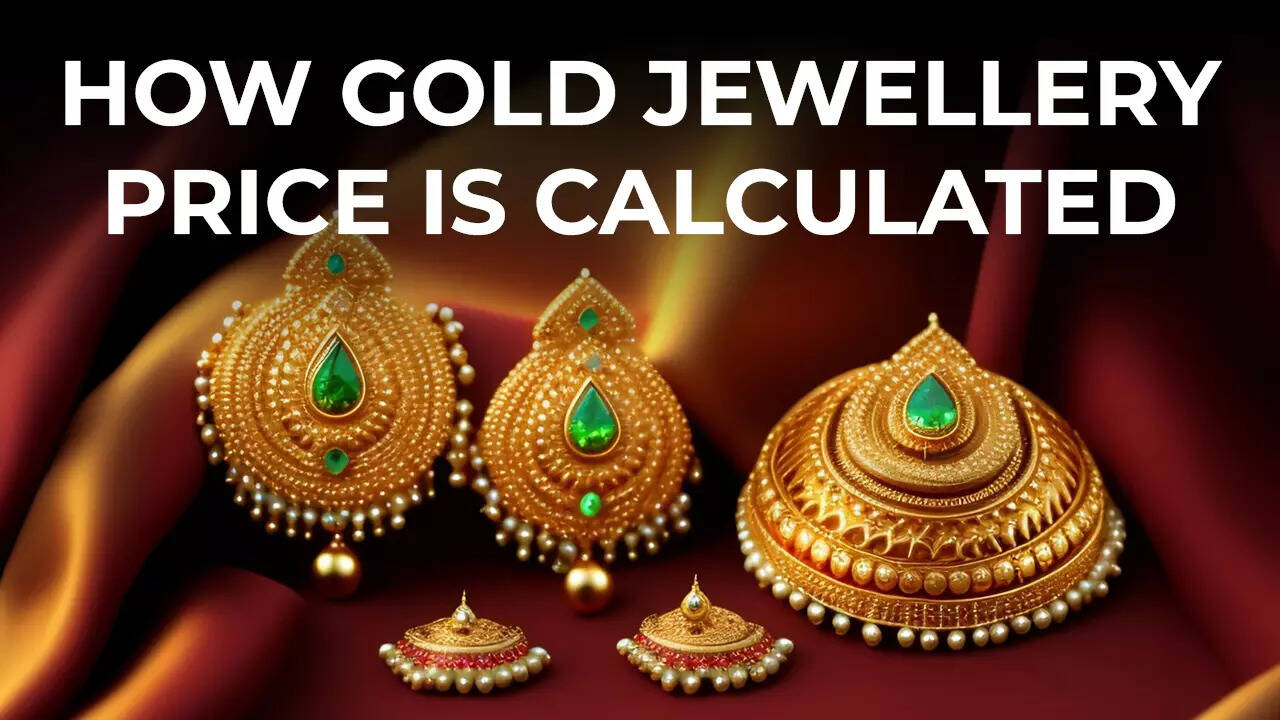Given the long-standing tradition of purchasing gold in various forms, such as jewellery and coins, particularly on auspicious occasions like Akshaya Tritiya, it is essential for Indians to conduct thorough research before making a purchase.
It is important to note that gold prices can vary between jewellers. Vikas Singh, MD & CEO, MMTC-PAMP told ET’s Preeti Motiani, “The price of gold jewellery varies from one jeweller to another due multiple reasons like differences in the cost of acquiring the gold, including expenses such as refining and transportation. When pricing gold jewellery, jewellers typically charge a making charges ranging from 10% to 25%. The difference in pricing also stems from the purity or karatages of the gold used.”
Gold Jewellery Price: How Jewellers Calculate It
To determine the final price of gold jewellery, jewellers use the following formula:
Final price of the jewellery = {Price of gold X (Weight in grams)} + Making charges + GST at 3%+ Hallmarking charges
The price of gold varies based on the karat (KT) of the jewellery, such as 24KT, 22KT, 18KT, or 14KT. Higher karat gold, like 24KT, is more expensive due to its purity, while lower karat gold, like 14KT, is relatively cheaper.
In addition to the gold price, jewellers charge making charges, also known as wastage charges. These charges can be calculated either per gram or as a percentage of the prevailing gold price. Some jewellers use a combination of both methods, such as charging 1% of the gold price per gram. For instance, if the price of 22KT gold is Rs 68,000 per 10 grams, the making charges would be Rs 680 per gram (1% of Rs 68,000). So, for a 10-gram gold chain, the making charges would amount to Rs 6,800 (Rs 680 per gram X 10 grams).
Also Read | When will gold prices hit Rs 2 lakh mark? Here’s what experts say
Furthermore, GST is applied to the total cost of the gold jewellery, which includes the making charges. Hallmarking charges are also levied, as selling hallmarked gold is mandatory.
To illustrate the calculation process, consider a scenario where a jeweller lists 22KT gold at Rs 65,000 per 10 grams and 18KT gold at Rs 56,000 per 10 grams. A customer purchases an 11-gram 22KT gold chain and a diamond ring with 3.5 grams of 18KT gold. The making charges are a flat rate of Rs 500 per gram. As the jewellery items have different karats, the calculations will be performed separately for each item.
Calculation of Gold chain price
*Price of 10 grams 22 KT gold: Rs 65,000. Hence, Price of 1-gram 22KT gold: Rs 6,500 (Rs 65,000/10)
Calculation of diamond ring price
*Price of 10 grams 18 KT gold: Rs56,000. Hence, Price of 1-gram 18KT gold: Rs 5,600 (Rs 56,0000/10)
Buying gold jewelllery? Things To Keep In Mind
- When purchasing gold jewellery with diamonds or other gemstones, it is crucial to weigh the gold and the gemstones separately to determine the cost accurately. Unethical jewellers may weigh the entire piece together and calculate the price based on the gold’s cost, which can be problematic when the customer wants to sell or exchange the jewellery later, as only the gold’s value will be considered, and the stone’s weight will be deducted.
- To ensure transparency, the bill issued by the jeweller should include all relevant information about the gold jewellery, as per the Bureau of Indian Standards (BIS). The gold jewellery bill should mention description of the gold item, net weight of precious metal, purity in carat and fineness of gold item, and hallmarking charges. If the jewellery contains diamonds or other gemstones, their price must be listed separately on the bill.
- It is essential to ensure that the purchased gold jewellery has BIS hallmarking, which became mandatory from June 16, 2021. The revised hallmarking signs, effective from July 1, 2021, include the BIS logo, purity/fineness grade, and a 6-digit unique alphanumeric code (HUID code). Starting from April 1, 2023, jewellers are not allowed to sell gold jewellery without the HUID code.
- It’s a prevalent practice for customers to exchange their old gold jewellery for new pieces. When purchasing new gold jewellery, it’s crucial to know the exchange policies of the jeweller. Some jewellers provide 100% of the gold value for exchanges but only 90% of the gold value if opting for cash instead. Moreover, it’s advisable to inquire about any resale value for the diamonds or gemstones in the jewellery.

